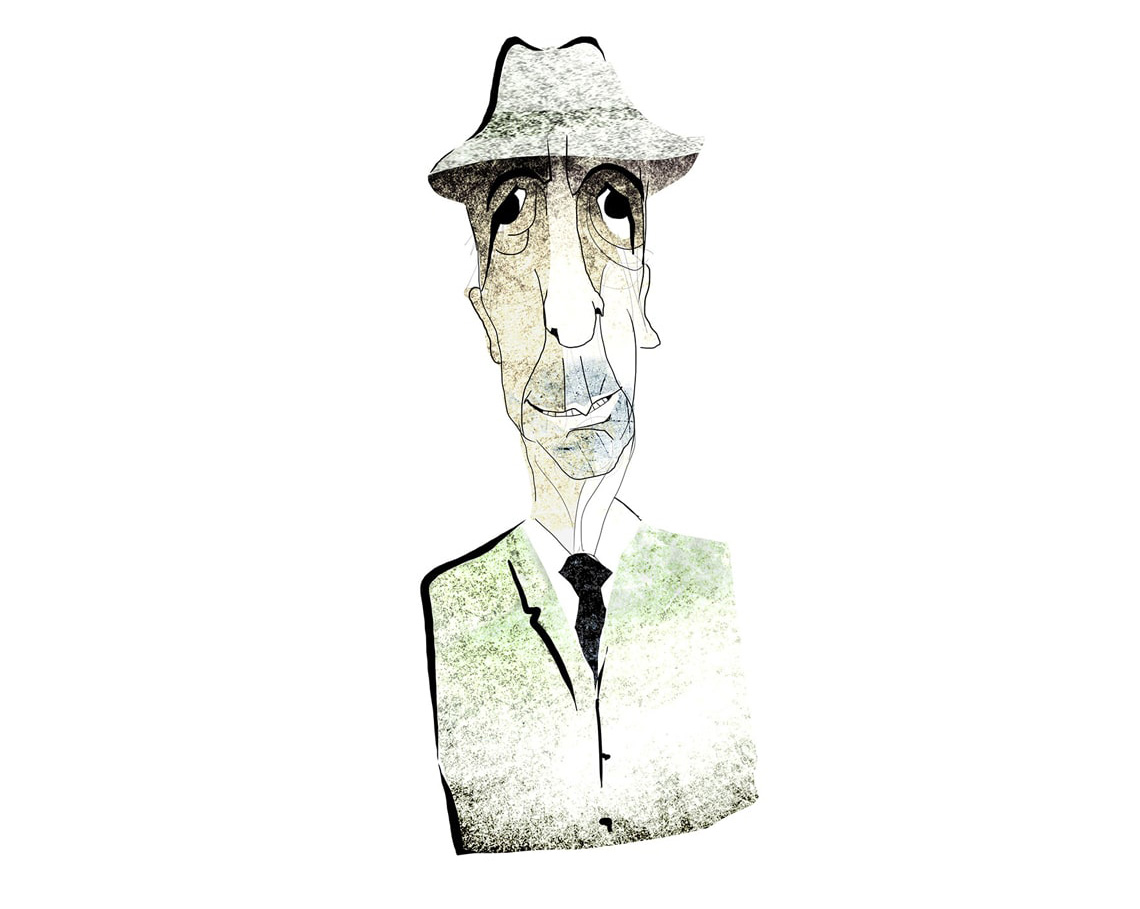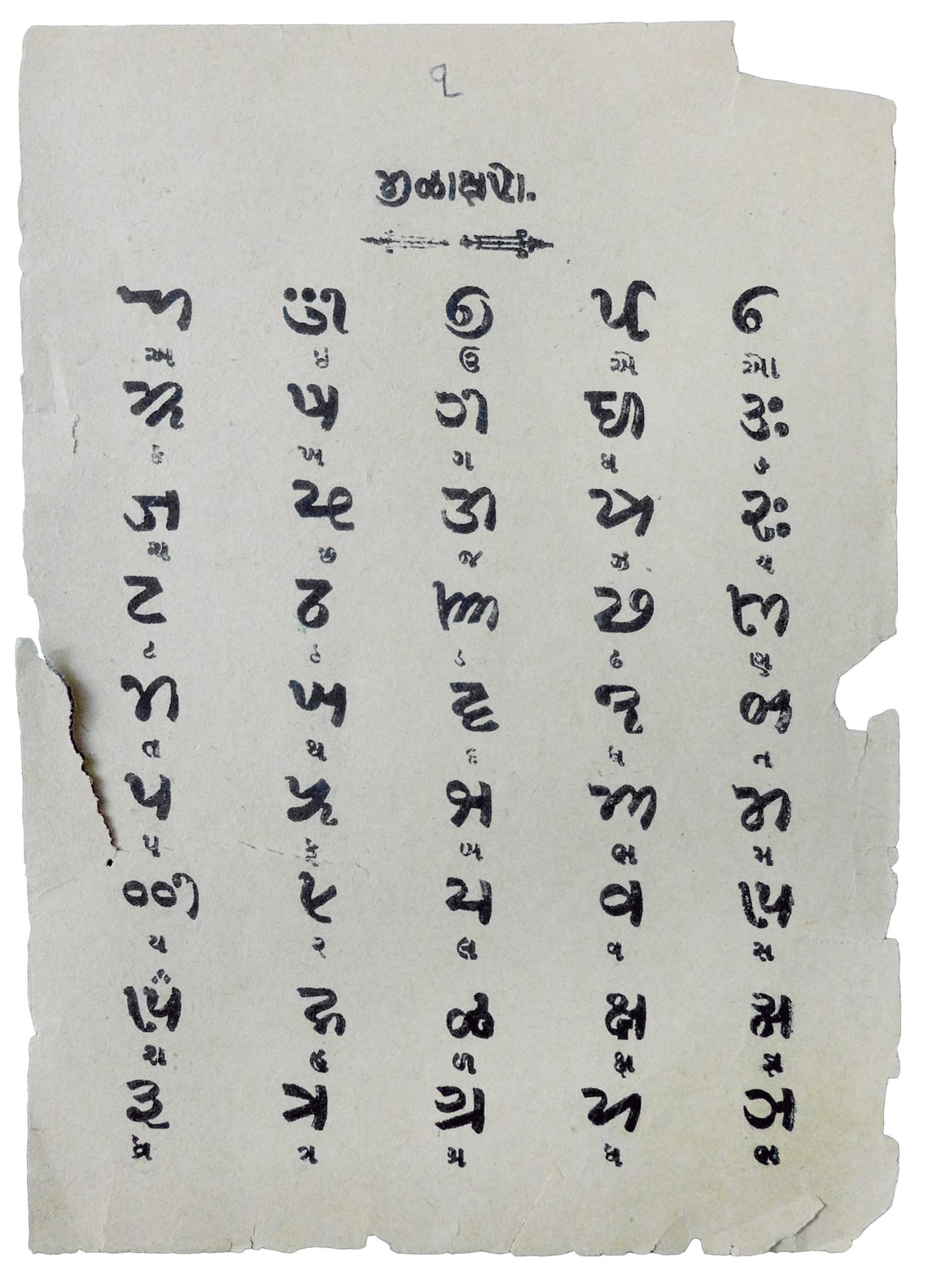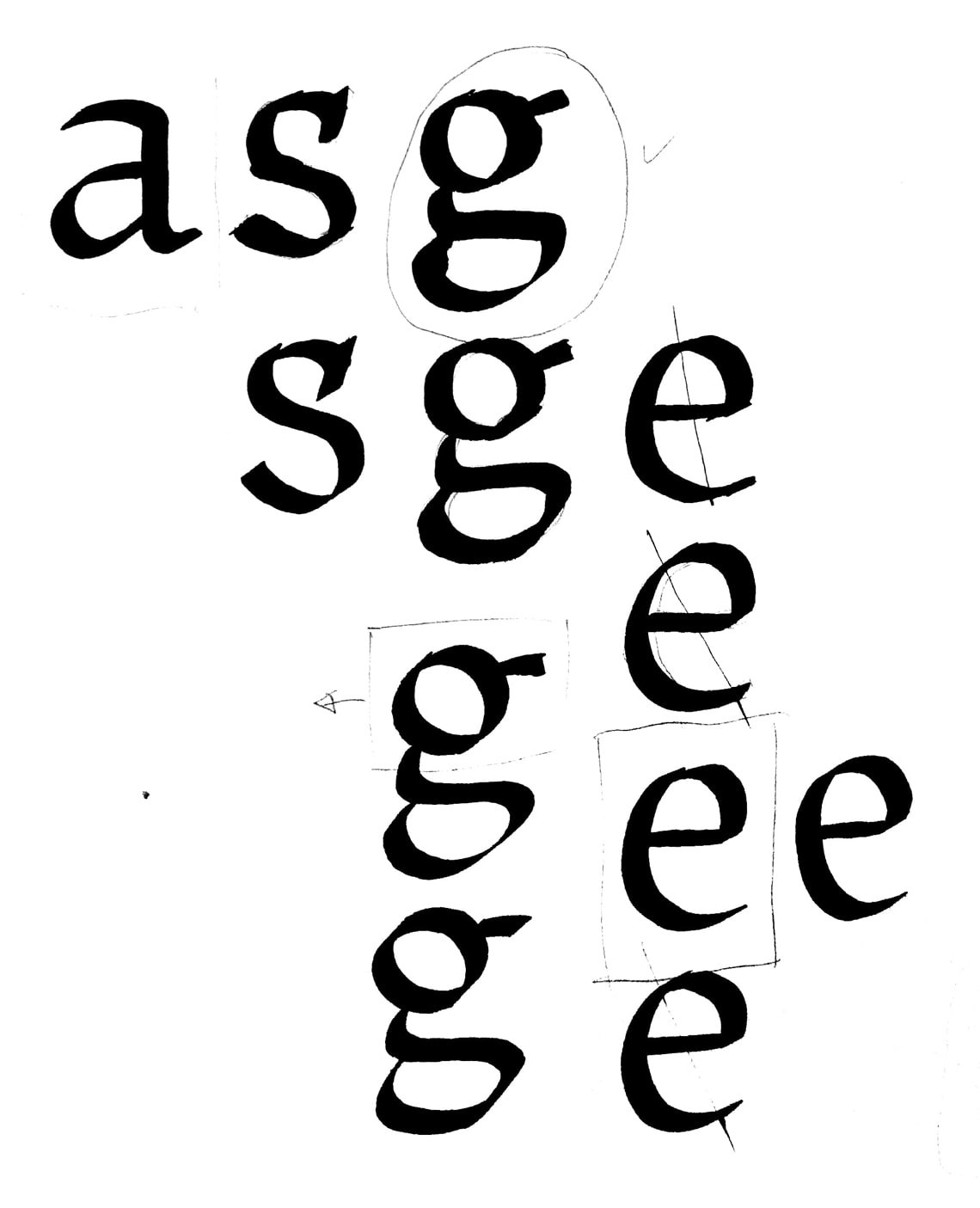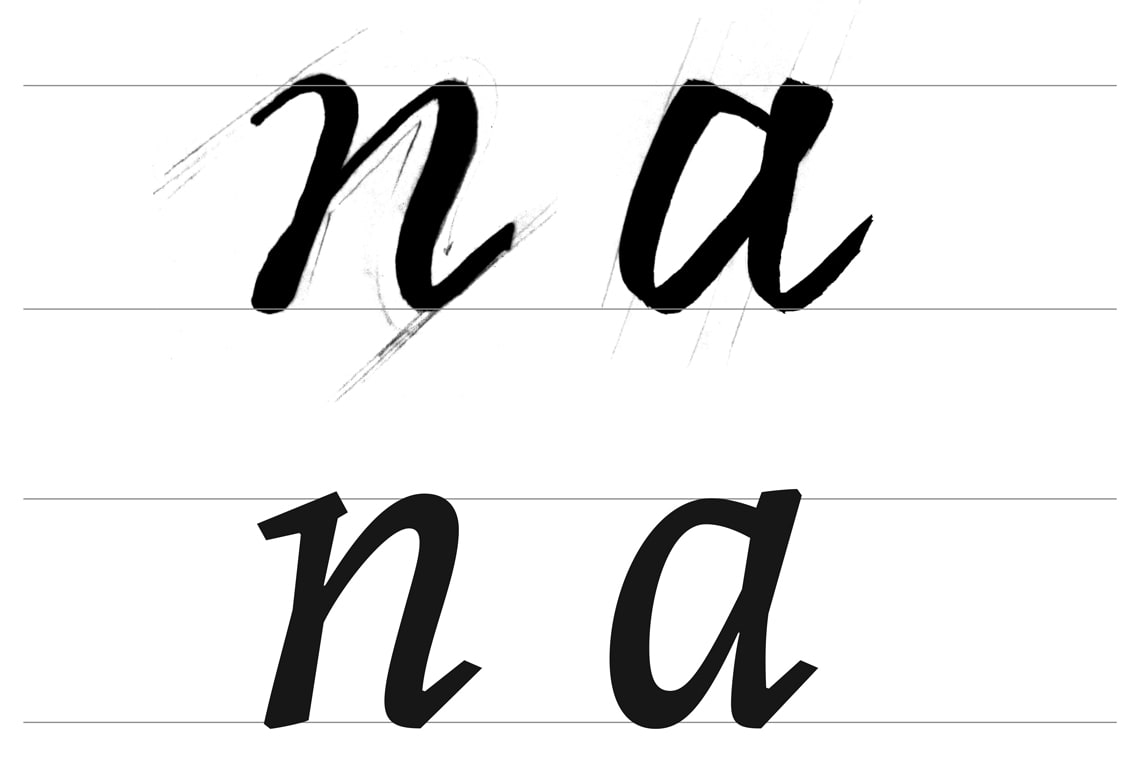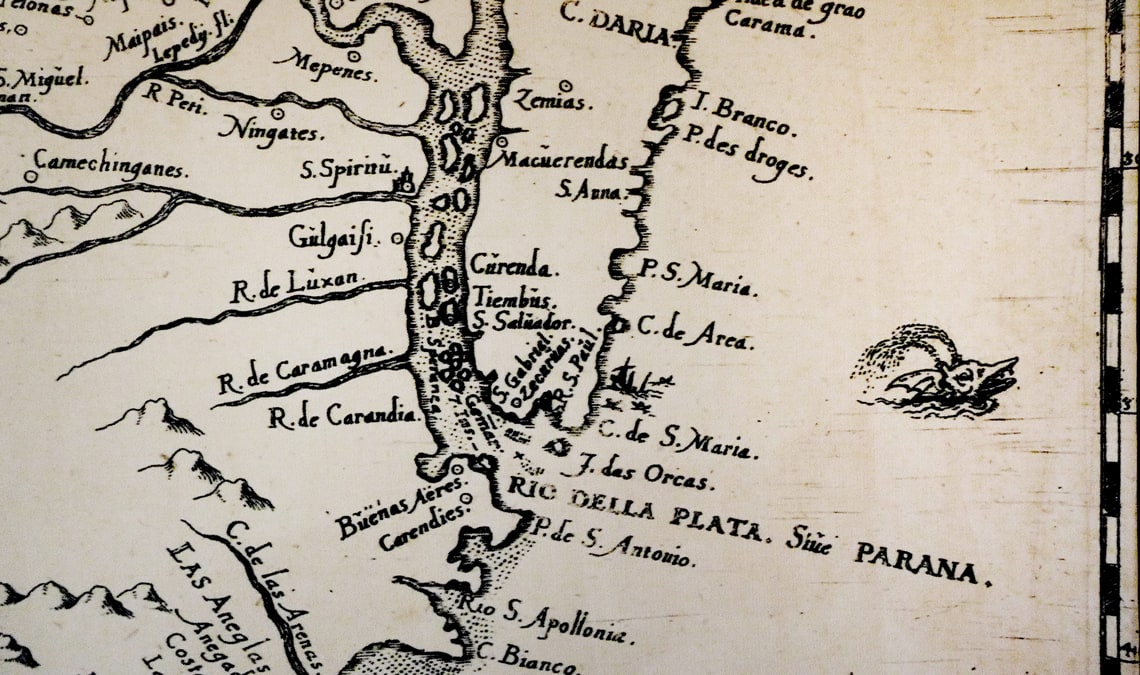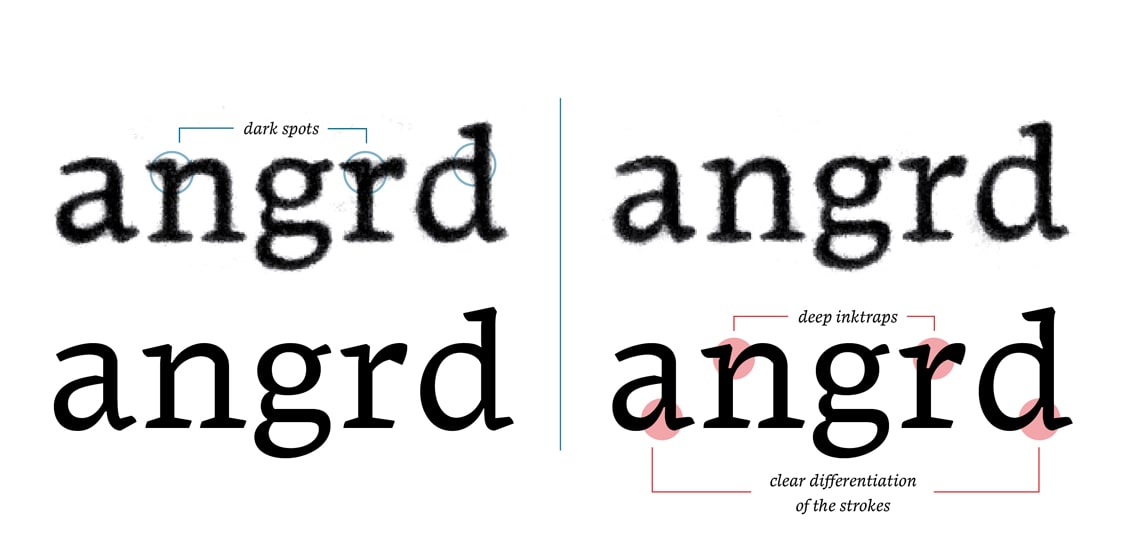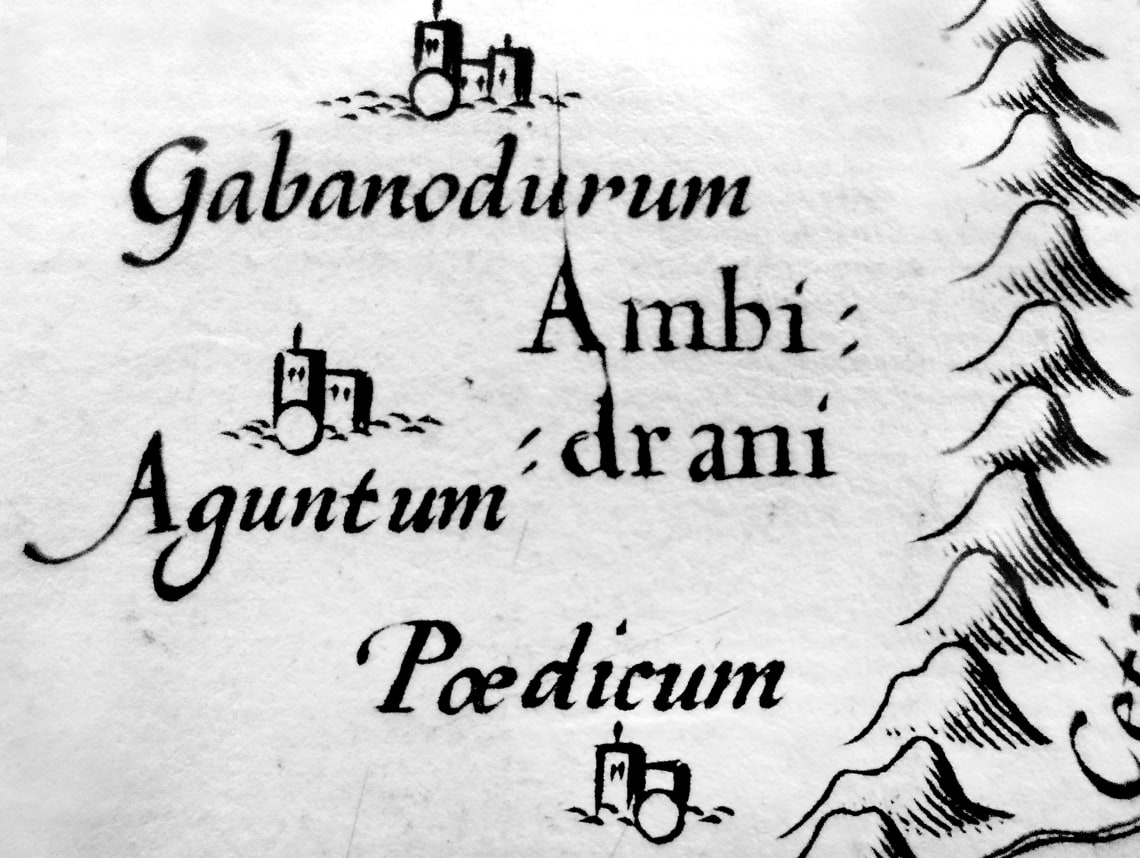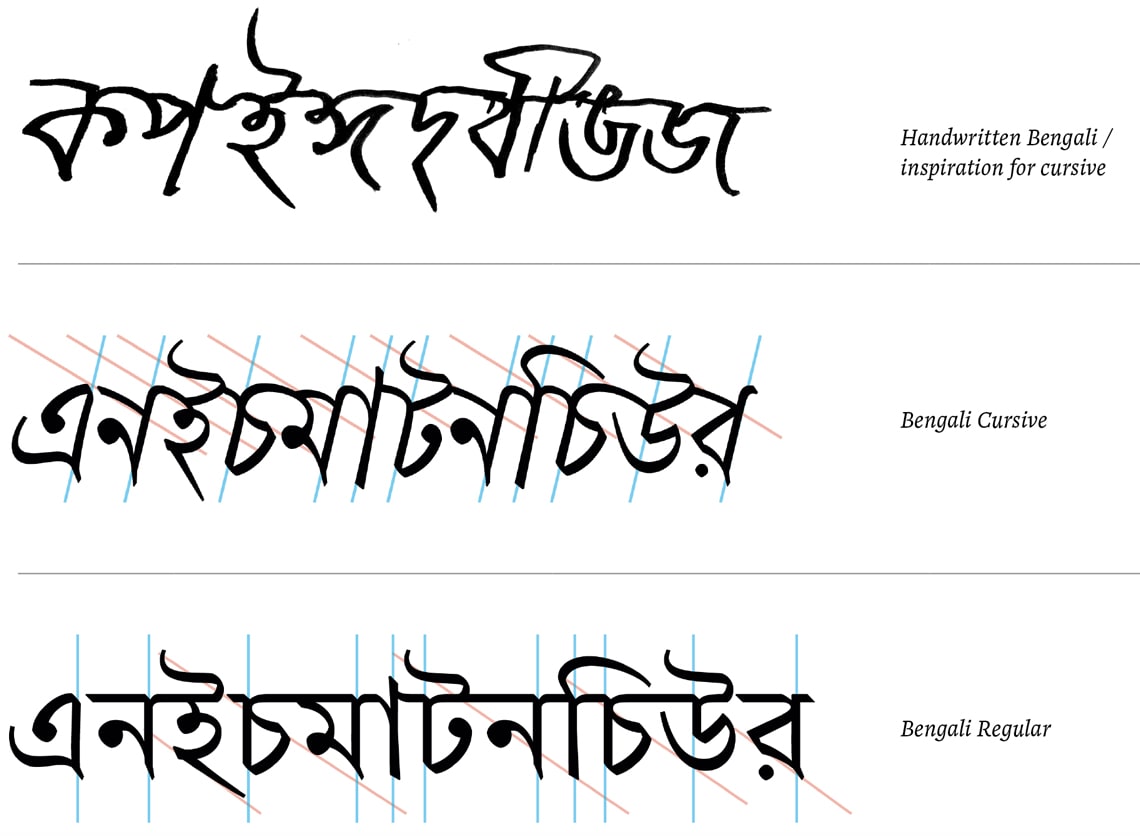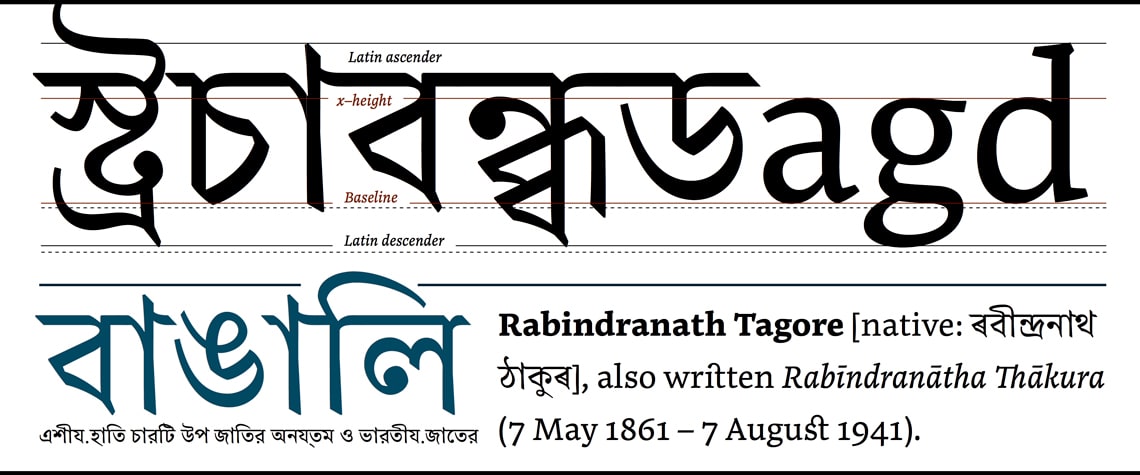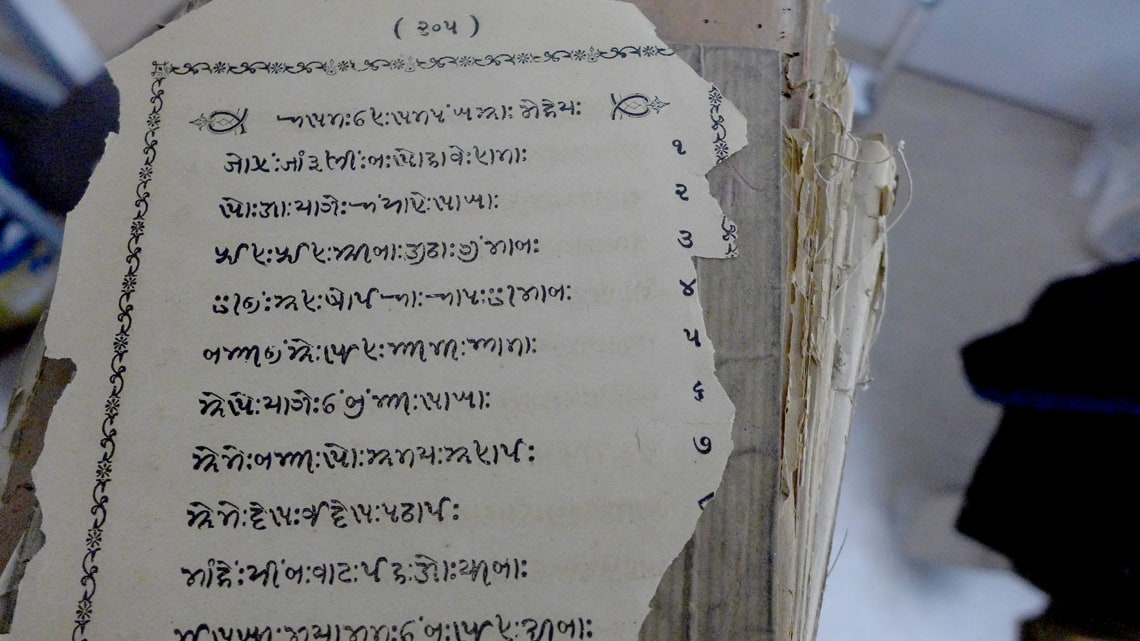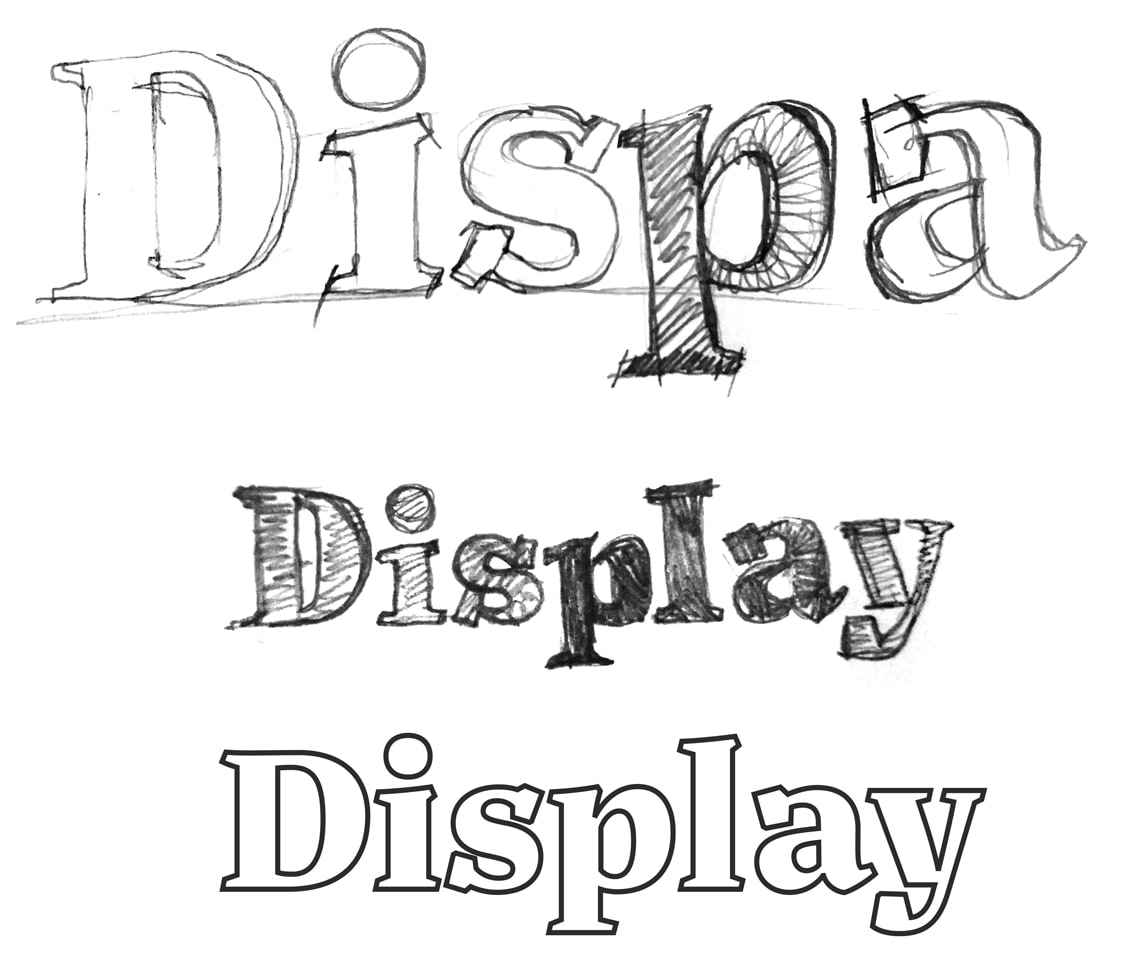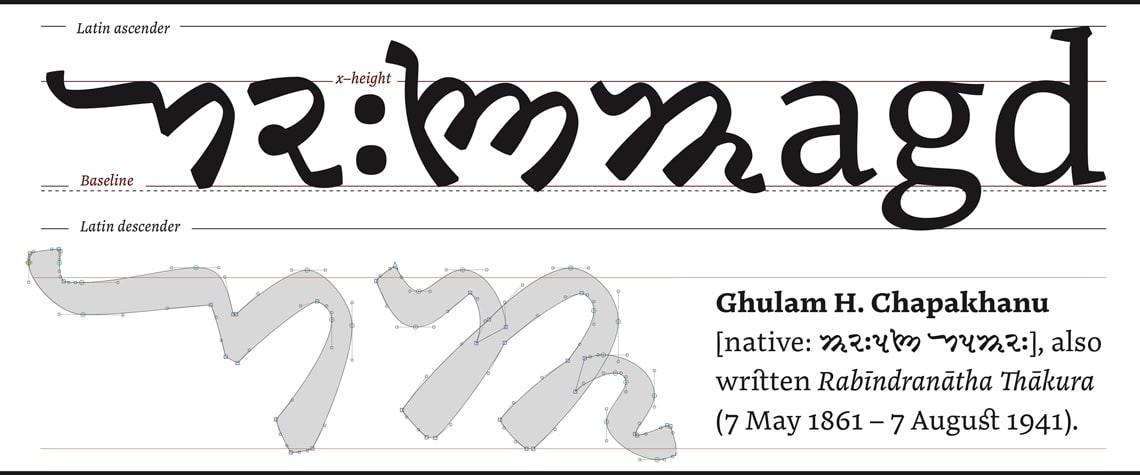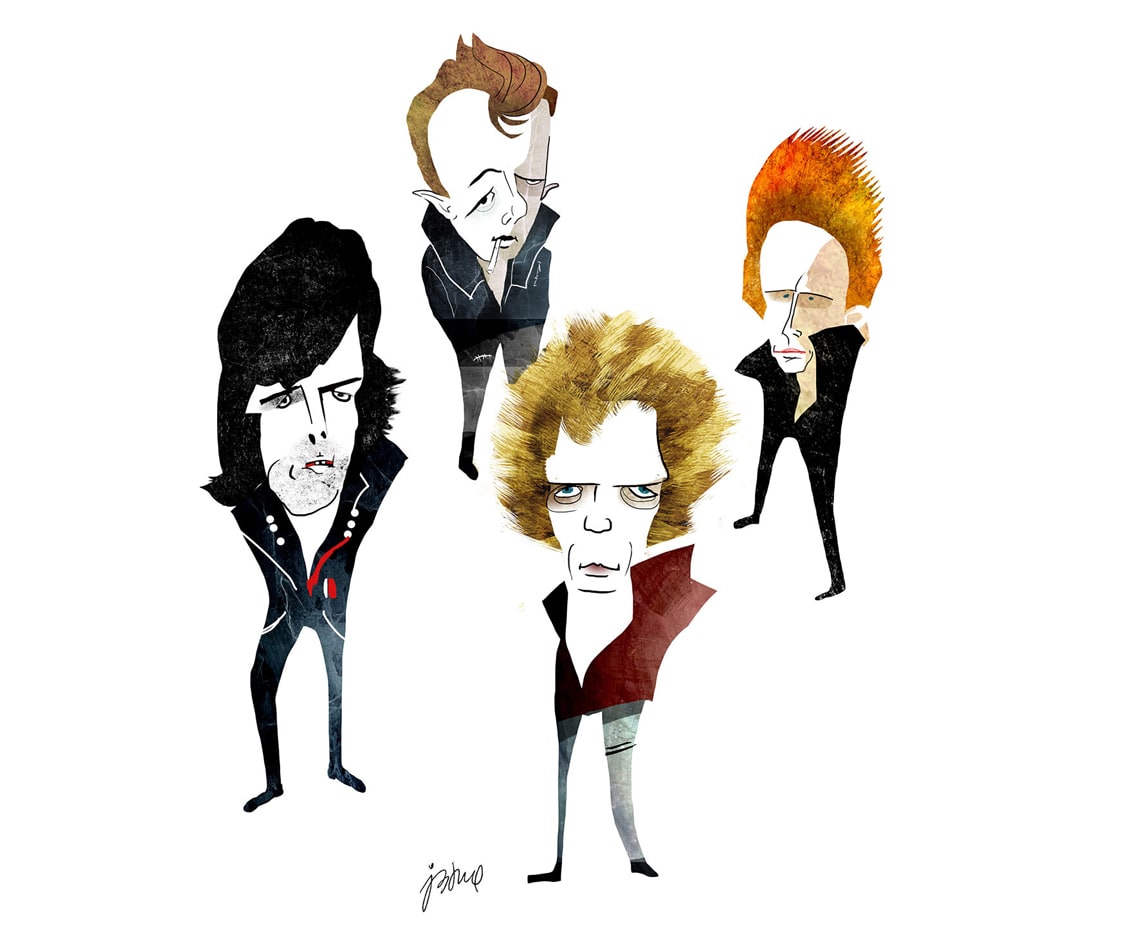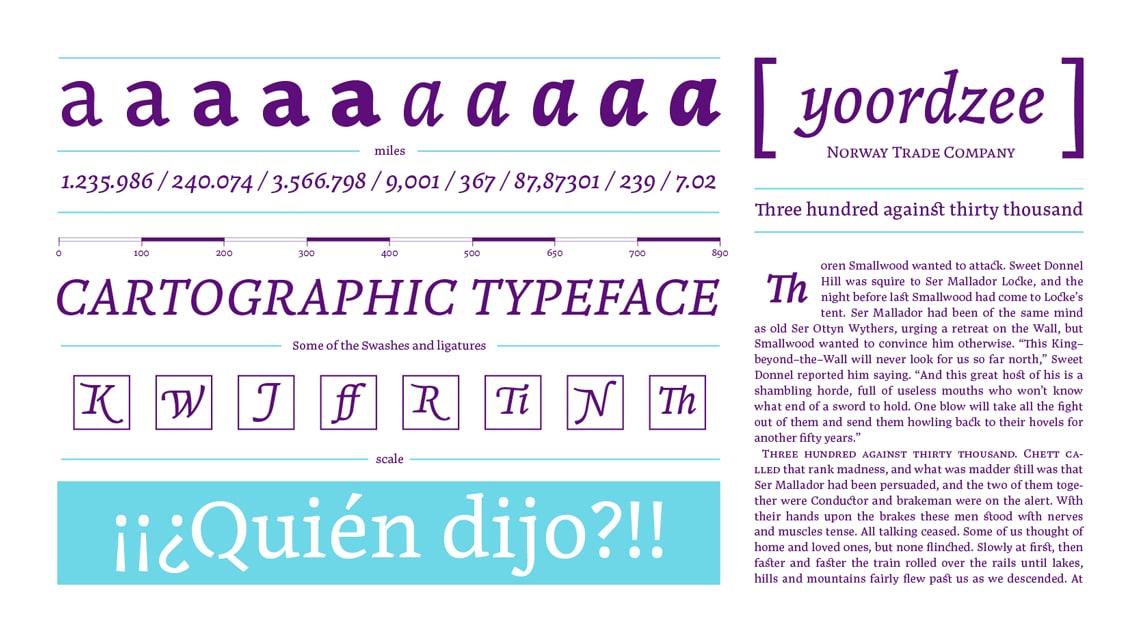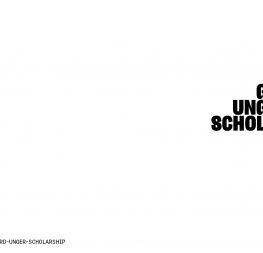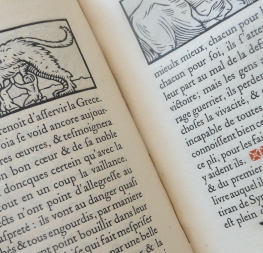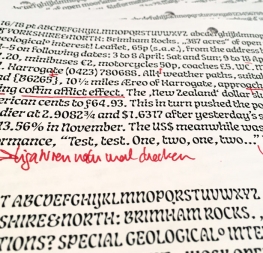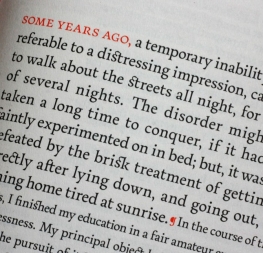You graduated with a Master of Arts in Type Design (MATD) from Reading University in the UK. Tell us about the programme, the processes you went through, and the instructors you had.
I remember it as a great year in all respects. It was constant challenges, an elevated level of discussion, great teachers, and extraordinary friends. The programme is very practical, as it should be, with a big foot in academic research. The research portion was unknown to me, but I ended up fascinated and with great expectations to include research as an integrated part of my professional career. World-class teachers, such as Fiona Ross, Dr Gerard Unger, and Gerry Leonidas, encourage students to understand type in its context and to see typography beyond the practical skills you might develop. To me, that’s the central manifesto of the programme.
And did your illustration skill have any bearing on mastering the material?
My illustration style is rougher, and type design is concentrated detail. Drawing letters is no different than drawing anything else, but you judge differently. When evaluating your work, you must move to a broader discernment. Yes, in the end you illustrate letterforms, but with the intention that they function alongside other letters; it requires more attention. Your little creations need to behave as a team under firm and “regulated” reading parameters. That’s the major difference from other artistic disciplines — you must restrain your creativity within a very narrow margin of accepted conventions. The eye and your judgement become your main tools at the end, and they need time to be trained.
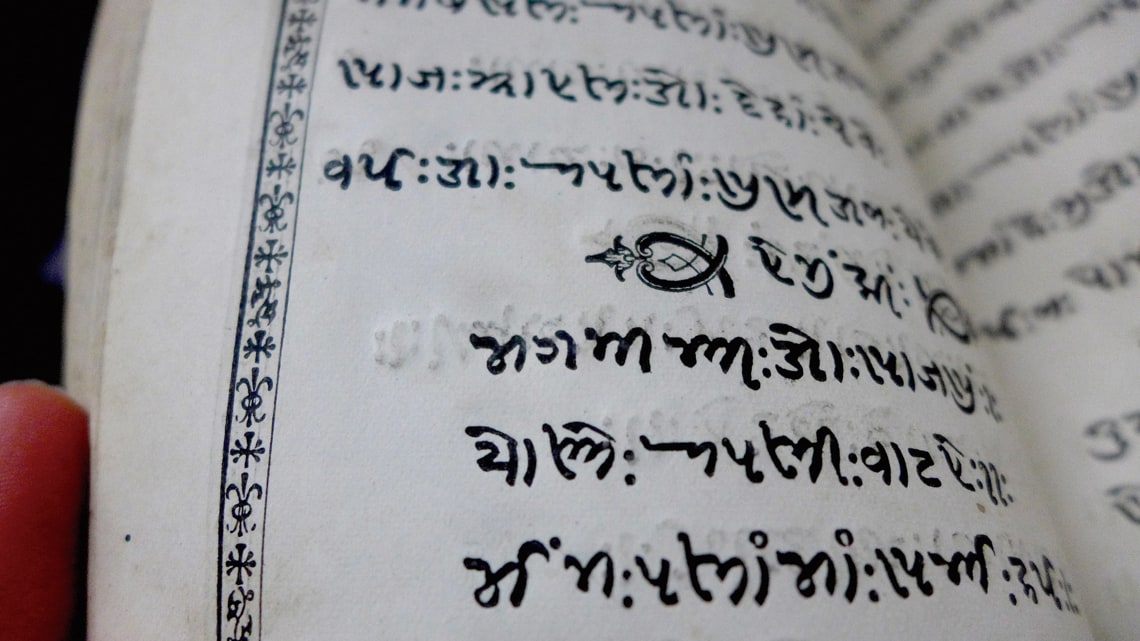
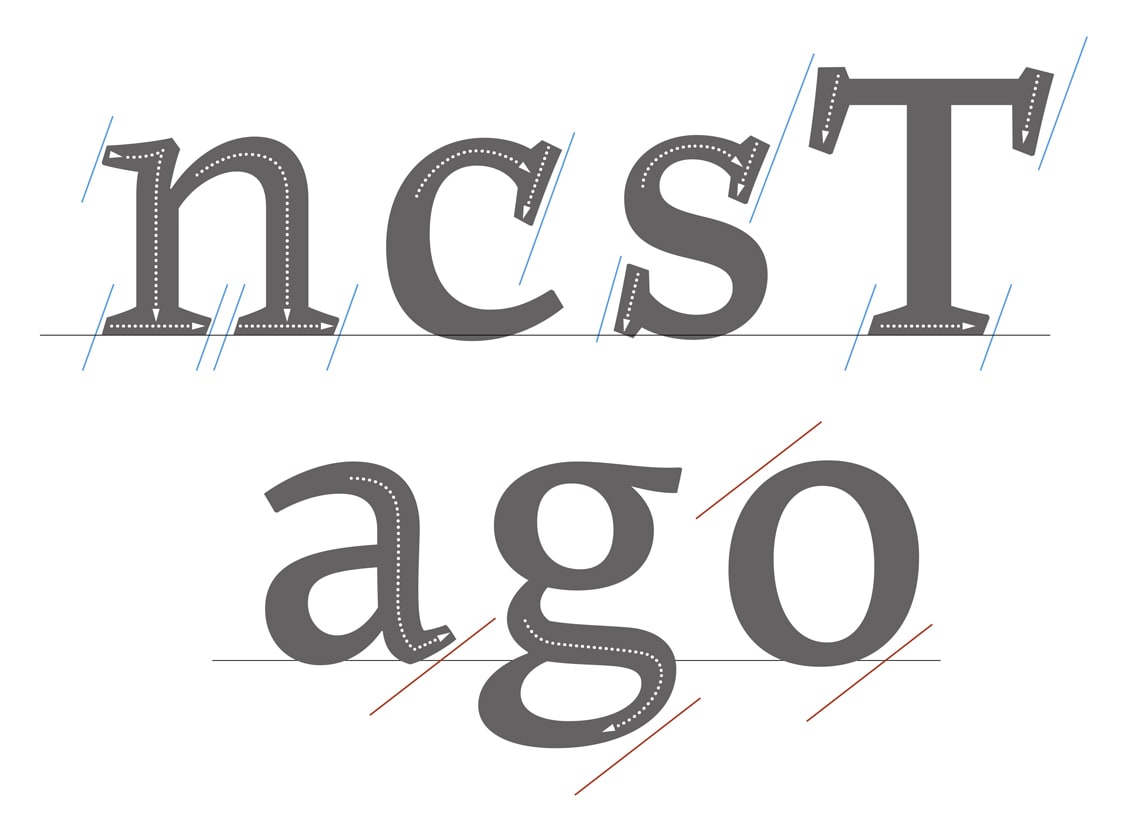
You’re married, right? Were you married during the programme, and how did you balance the school requirements with personal responsibilities?
Yes, we were married then. Vale enjoyed the UK quite a lot, though she wasn’t a fan of the early winter dusk. She did a lot of things on her own while we were there, but she also hung out in the department quite a lot. Even though her profession has nothing to do with typography, she seemed to fit in easily with the group and even enjoyed going with us to the Plantin Moretus Museum. So I would say for us it was not something difficult to balance. On the contrary, she was a great support and the best company.

